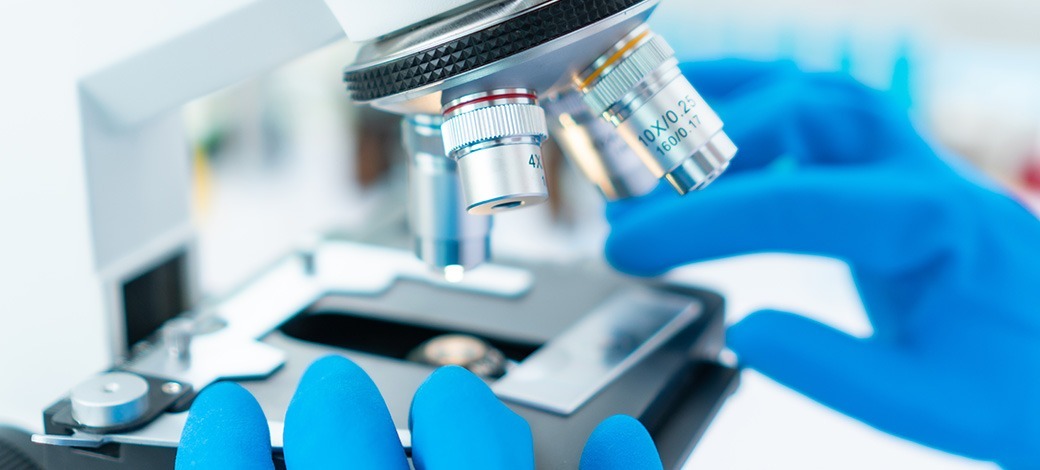
In 2025, the Brazilian Health Regulatory Agency (“ANVISA”) will continue to play an essential role in regulating and supervising products and services that directly impact the health and well-being of the Brazilian population.
This Client Alert, based on ANVISA’s updated Regulatory Agenda (“AR”), aims to keep our clients informed about the current regulatory landscape in Life Sciences and Healthcare, and provides information on some of the important issues that may progress throughout 2025.
Pesticides
- Maximum residue limits (“MRLs”) for pesticides in food.
Addressed in Public Consultation (“CP”) No. 1037/21 and the Regulatory Impact Analysis (“AIR”), ANVISA’s initiative seeks to change the Collegiate Board Resolution (“RDC”) No. 4/12, which establishes the criteria for conducting pesticide residue studies to register pesticides in Brazil.
The change aims to reduce uncertainties on the calculation of the MRL by increasing the number of field trials and allowing up to half of these trials to be carried out abroad. It also includes the need for dietary risk assessment in accordance with RDC No. 295/19, among other provisions.
In addition, this change seeks to align the health regulation with the technical developments identified over the last decade, in compliance with the recommendations of international organizations such as the Organisation for Economic Co-operation and Development (OECD) and the Codex Alimentarius, which are adopted by international authorities such as the European Food Safety Authority (“EFSA”) and the U.S. Environmental Protection Agency (“EPA”).
- Admission of toxicological assessments from an Equivalent Foreign Regulatory Authority (“AREE”) to register pesticides.
Addressed in CP No. 1201/23, ANVISA’s initiative seeks to establish a Normative Instruction (“IN”) that defines the criteria for admitting toxicological assessments based from decisions by AREEs to register pesticides. The proposed IN aims to establish the requirements for registering pesticides using an optimized analysis procedure.
In addition, the proposed IN considers the EFSA, the EPA, the Australian Pesticides and Veterinary Medicines Authority (APVMA), the Health Canada Pest Management Regulatory Agency (PMRA), the Japanese Ministry of Health, Labor and Welfare (MHLW), or the Japanese Ministry of Agriculture, Forestry and Fisheries (JMAFF) as AREEs.
Foods
- MRLs of veterinary medicines in foods of animal origin.
Addressed in CP No. 1280/24, ANVISA’s initiative seeks to change RDC No. 730/22, which provides for assessing the risk to human health of veterinary medicines, MRLs in foodstuffs of animal origin, and analytical methods for conformity assessment purposes.
The change aims to include criteria for extrapolating MRLs, considering the possibility of using evidence obtained from one species to extrapolate MRLs for other biologically similar species.
Additionally, this change seeks to align the health regulation with the approach adopted in Codex Alimentarius, a United Nations (UN) and World Health Organization (WHO) program that establishes international food standards and encourages safe practices in international food trade.
- Regenerated cellulose films in contact with food.
Addressed in CP No. 1280/24, ANVISA’s initiative seeks to completely revise the health regulation on regenerated cellulose films intended to come into contact with food, update the classification of these films and the list of substances authorized in their production. The new RDC should repeal the previous regulation on the subject, RDC No. 217/02.
This regulatory change is consistent with negotiations held within Mercosur, seeking to ensure alignment with the advances identified in the regulation of the subject by other leading regulatory authorities.
In addition to the new RDC, ANVISA is also expected to publish an IN defining the lists of substances authorized for the manufacture of regenerated cellulose films, which was the addressed in CP No. 1281/24.
Cosmetics
- List of prohibited substances in cosmetics, perfumes and personal hygiene products.
Addressed in CP No. 1304/24, which is available for contributions until March 07, 2025, ANVISA’s initiative seeks to update the list of substances that cannot be used in cosmetics, perfumes and personal hygiene products. The draft RDC proposes a period of twelve months, counting from publication, for the adjustment of authorized products.
This regulatory change aims to achieve greater regulatory convergence within Mercosur and ensure that health regulations are aligned with the latest scientific references, facilitating international trade of safer and more effective products.
- List of restricted substances in cosmetics, perfumes and personal hygiene products.
Addressed in CP No. 1305/24, which is available for contributions until March 07, 2025, ANVISA’s initiative seeks to update the list of substances that must comply with the conditions and restrictions established for cosmetics, perfumes and personal hygiene products.
This regulatory change aims to achieve greater regulatory convergence within Mercosur and ensure that health regulations are aligned with the latest scientific references, facilitating international trade of safer and more effective products.
The draft RDC proposes a period of 24 months, counting from publication, for the adjustment of regularized products, and a period of 36 months for the adjustment of labels on new allergenic ingredients established by the RDC.
Medicines
- New regulatory framework for herbal medicines.
Addressed in the AIR of November 2024, ANVISA’s initiative seeks to establish a new regulatory framework for herbal medicines, addressing marketing authorizations, prohibitions and restrictions on composition, the list of pesticides subject to assessment in species cultivated in Brazil, and the classification of herbal medicines subject to simplified marketing authorization.
The AIR reports that Brazil’s low number of authorized products contrasts with the country’s great biodiversity and that the quality control required in Brazil would be stricter than that of other international regulatory authorities. This represents a disproportionate obstacle to the level of risk that these products could cause to public health.[1]
The review of the regulatory framework for herbal medicines is addressed in the following CPs:
- CP No. 1290/24, which is available for contributions until March 05, 2025, and proposes a RDC on the marketing authorization of herbal medicines and the marketing authorization and notification of traditional herbal products.
- CP No. 1291/24, which is available for contributions until March 05, 2025, and proposes an IN on prohibitions and restrictions applicable to the composition of herbal medicines.
- CP No. 1292/24, which is available for contributions until March 05, 2025, and proposes an IN on the “list of agrochemicals selected for analysis in herbal medicines”.
- CP No. 1293/24, which is available for contributions until March 11, 2025, and proposes the revision of IN No. 02/14, which published the “List of herbal medicines for simplified marketing authorization” and the “List of traditional herbal products for simplified marketing authorization”.
The new RDC aims to modernize the regulatory criteria and controls, encourage the development of the Brazilian industry and expand patient access to safe and effective products, in addition to repealing the current RDC No. 26/14.
- Clinical research into Advanced Therapy Products (“ATP”).
The inclusion of this new topic in ANVISA’s AR is due to the publication of Law No. 14,874/24, which provides for research with human beings and establishes the National System of Ethics in Research with Human Beings.
ANVISA’s initiative seeks to update RDC No. 506/21, which establishes the rules for conducting clinical trials with ATPs, according to the requirements established by Law no. 14,874/24, such as the new analysis deadlines for clinical research consent requests.
This topic is considered a priority within ANVISA’s AR and is also associated with the innovation ecosystem of the Health Economic-Industrial Complex (“CEIS”), contributing to the development of new technologies in the health sector.
- Health risk methodology for granting or renewing the Certificate of Good Manufacturing Practices (“CBPF”) and the Certificate of Good Distribution and/or Storage Practices (“CBPDA”).
Addressed in CP No. 1303/24, ANVISA’s initiative seeks to update the health risk methodology for granting or renewing the CBPF and CBPDA for establishments manufacturing active pharmaceutical ingredients (APIs), medicines, cannabis products for medicinal purposes, biological products and medical devices.
The proposal aims to provide swifter access to new technologies, considering the limits of ANVISA’s operational capacity, without compromising the mitigation of health risks.
The draft RDC aims to establish criteria for health risk management, rationalize ANVISA’s on-site inspections and certification of companies, as well as the possibility of using information issued by AREEs.
Medical devices
- Revision of the regularization of Software as a Medical Device (SaMD).
ANVISA’s initiative seeks to improve RDC No. 657/22, which provides for the regularization of SaMD, provided that ANVISA must prepare an AIR to support this updating process.
Although recent, the RDC requires improvement due to the accelerated progress of new technologies, such as artificial intelligence solutions, machine learning or customizable software. This update also seeks to ensure swifter access to safe, effective and innovative products for the population.
- In vitro diagnostic medical devices subject to prior analysis.
According to the AR, ANVISA has identified two regulatory gaps regarding in vitro diagnostic medical devices (“IVD”), which are: (i) the lack of a regulation defining the products subject to prior analysis for marketing authorization purposes; and (ii) the lack of criteria for admitting analyzed products.
The lack of a transparent and predictable regulation on IVDs subject to prior analysis is detrimental to both ANVISA and the regulated sector. The initiative aims to correct this gap, provide greater clarity for the regulated sector, and strengthen the legal basis for ANVISA’s administrative acts.
The topic is considered a priority within ANVISA’s AR, and is also associated with the CEIS innovation ecosystem, as part of its contribution to the development of new technologies in the health sector.
Health services
- Health requirements for the operation of dental care services.
Addressed in CP No. 1301/24, which is available for contributions until February 03, 2025, and the AIR of November 2024, ANVISA’s initiative seeks to establish a RDC on Good Operating Practices for dental care services, so as to standardize health regulation at the federal level, establish adverse events monitoring requirements, and develop more efficient health risk management within the National Health Oversight System.
The provisions in the draft RDC include the classification of dental care services, the types of care provided, whether in the establishment itself or in mobile, portable, or transportable units, conditions for processing, cleaning, sterilizing, and packaging medical devices, and the requirements for the physical structure of the establishment and equipment.
The draft RDC involved the participation of the Ministry of Health and the Brazilian Federal Dental Council through technical meetings held with ANVISA. Institutional cooperation provided a favorable environment for the development of a robust regulatory instrument that fosters patient safety.
Ports, airports and borders
- Technical regulation of imported goods and products for health inspection purposes.
Addressed in Targeted Consultation (CD) No. 2/22 and the AIR of May 2024, ANVISA’s initiative seeks to revise RDC No. 81/08, which provides for the technical regulation of imported goods and products subject to health inspection.
RDC No. 81/08 is wide-ranging and complex, and applies to companies that import for industrial or commercial purposes, institutions that provide health services (public or private), as well as individuals, patients or researchers. In addition, the entire import procedure is directly related with the customs procedures established by the Brazilian Internal Revenue Service, such as import modalities, customs regimes and access systems.
The update of the RDC is intended to modernize ANVISA’s actions regarding import or export approval processes, reduce deadlines and costs, and assist in the development of CEIS, given the country’s dependence on strategic products and inputs of international origin.[2]
General topics
- Administrative Sanctioning Proceedings (“PAS”).
Addressed in CP No. 1297/24, which is available for contributions until February 03, 2025, and the AIR of November 2024, ANVISA’s initiative seeks to establish a RDC on the rules for PAS.
The draft RDC was developed in light of the audit carried out by the Brazilian Federal Court of Accounts (“TCU”), which resulted in Ruling No. 732/20. The TCU concluded that the PAS procedures carried out by ANVISA are inefficient in investigating and holding accountable sanitary infractions.[3]
The draft RDC includes the guidelines to be followed during the stages of the PAS, encompassing the drafting of the infraction notice, the defense, the issuing area’s statement, the filing of appeals and judgments rendered in trial, appeal or final resort. In addition, the draft provides for the possibility of signing a conduct adjustment agreement (TCAC), as a new option within the scope of the PAS.
Demarest’s Life Sciences and Healthcare team is available to provide any further clarifications that may be necessary.
[1] Reference addressed in vote No 251/24: PDF 25351.900513/2022-87
[2] Data from the Ministry of Health, cited by vote No. 90/24: PDF 25351.900783/2022-98
[3] Reference addressed in vote No 269/24: SEI/ANVISA – 3287330 – vote
Related Partners
Related Lawyers
Giulio Gatti
Monique Guzzo













